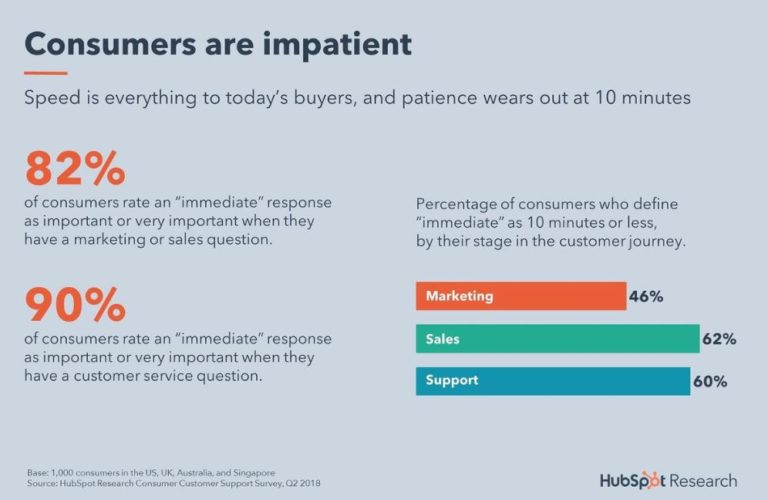Understanding the role of voice in martech
We unpack voice’s larger role in the martech landscape, including applications that go beyond search into the realm of operations and customer experience.
We unpack voice’s larger role in the martech landscape, including applications that go beyond search into the realm of operations and customer experience.
Voice technology is playing an ever-growing role in a variety of martech applications, from AI-powered transcription tools like Trint to signal-based AI tools like Cogito that analyze behavioral and vocal cues to better understand how individuals actually feel, then provide in-the-moment feedback during conversations.
Voice assistants come baked into our smartphones, computers, and tablets, while smart speakers proliferate our homes and businesses.
Consumers’ expectations of receiving stellar customer service across all channels is contributing to the adoption of voice technology. Consumers are also becoming more comfortable with voice assistants and other speech-activated tools, particularly via their smartphones.
A 2017 survey by the Pew Research Center found that almost half of Americans use digital voice assistants, with the majority of people accessing this technology via their smartphone.
In response to this shift in consumer behavior, businesses are using voice technology for a variety of tasks that touch all aspects of operations from marketing to sales to operations to customer experience.
At the State of Voice 2020, a global conference featuring all the top voices in voice technology (yes, I went there), Voicebot.ai revealed the staggering distribution of voice assistants, with Google reigning supreme (don’t they always?)
Google Assistant is now installed on over 1 billion devices, more than double that of the second contender, Apple’s Siri.
 Source: Data Driven Investor
Source: Data Driven Investor
People don’t just own these devices—they’re using them. Google reported that Google Assistant has 500 million monthly active users, and Apple has 375 million.
Understanding the adoption rate of voice search and the devices connected to it is important, because it’s this technology that’s paving the way for the wider acceptance of voice in applications that go beyond search.
Improvement in voice recognition accuracy (thanks to AI-powered tools) is also advancing the adoption of voice and speech technology.
Google’s machine learning algorithms had reportedly achieved a 95% accuracy rate for the English language as of March 2017 (the same threshold for human accuracy).
Finally, when looking to the future of voice, one must consider gen Z, a group of young people who are supremely comfortable with voice technology. Gen Z is expected to comprise nearly 40% of the workforce in 2020, and of course that number will only continue to grow.
This generation uses voice in the car when seeking directions, playing music, and adjusting climate controls. They operate TVs and phones using voice commands, make appointments and reservations via voice apps, and they’re comfortable connecting to businesses via voice-activated bots and assistants.
From a business perspective, one of the most promising areas if voice technology is in customer service. Applications like chatbots enable businesses to immediately connect to consumers via voice and text. It’s this immediacy that translates to a good customer experience.
HubSpot reports that 82% of consumers expect businesses to respond immediately to sales and marketing-related inquiries, and 90% of consumers rate an immediate response important or very important when they have a service question.
 Source: HubSpot
Source: HubSpot
A bad customer service interaction can hinder business growth. Things like waiting on hold, having to repeat the same information to multiple representatives, and a slow response time are all considered bad experiences.
Chatbots (e.g., software that automatically responds to text and voice inquiries) now exist to fill this need for instant communication.
Conversational chatbots and virtual assistants can be programmed to respond to a set of pre-defined questions. Advanced chatbots go beyond this, using natural language processing that employs artificial intelligence and machine learning to respond as a human might respond.
Companies aren’t just using voice to improve response times and enhance customer experience. Voice-enabled tools are increasingly being employed within an organization’s martech stack, to facilitate internal operations. Here are a few examples.
Steve Kraus, SVP of Product and Marketing at Cogito, writes, “In advanced call centers today, AI voice technology is providing immediate and comprehensive information about how a customer feels, their willingness to buy and their propensity to churn. This serves as critical competitive insight for marketing to dynamically adjust how their company interacts with each customer, and how they can adjust their behavior in real-time to ensure enhanced performance and happier customers. ”
Voice technology is increasingly being integrated into martech stacks thanks to the widespread distribution of voice assistants, improvements in voice recognition accuracy, and the growing influence of Gen Z in the workforce.
With the advances in AI-based speech recognition and analysis, it’s not difficult to envision a future where people can have conversations with computers who are able to reliably measure, analyze, and respond to issues as if they were, themselves, human.
“Long term, voice technology provides organizations with the capability to better predict future customer behavior. By analyzing key moments in customer interactions, organizations can identify good and bad behavior trends in customer interactions over time. With that information, they can eradicate detrimental behavior and adjust their approach to customers and prospects; ultimately creating a significant business advantage,” writes Kraus.
“The future of voice technology lies in the augmentation of customer service agents to increase the quality of engagement, and provide vital customer insights to drive marketing decisions.”